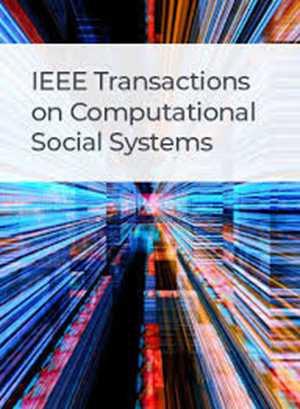Artificial Intelligence Can Recognize Whether a Job Applicant Is Selling and/or Lying According to Facial Expressions and Head Movements Much More Correctly Than Human Interviewers
IF 4.5
2区 计算机科学
Q1 COMPUTER SCIENCE, CYBERNETICS
IEEE Transactions on Computational Social Systems
Pub Date : 2024-04-08
DOI:10.1109/TCSS.2024.3376732
引用次数: 0
Abstract
Whether an interviewee’s honest and deceptive responses can be detected by the signals of facial expressions in videos has been debated and called to be researched. We developed deep learning models enabled by computer vision to extract the temporal patterns of job applicants’ facial expressions and head movements to identify self-reported honest and deceptive impression management (IM) tactics from video frames in real asynchronous video interviews. A 12- to 15-min video was recorded for each of the人工智能能根据面部表情和头部动作识别求职者是否在推销和/或撒谎,正确率远高于人类面试官
能否通过视频中的面部表情信号检测出面试者的诚实和欺骗性回答一直是人们争论的焦点,也是有待研究的问题。我们利用计算机视觉技术开发了深度学习模型,以提取求职者面部表情和头部运动的时间模式,从而从真实异步视频面试的视频帧中识别出求职者自述的诚实和欺骗性印象管理(IM)策略。在 N = 121 名求职者回答五个结构化行为面试问题时,为他们每人录制了 12 至 15 分钟的视频。每位求职者都填写了一份调查问卷,就四项即时通讯措施对自己的可信度进行自我评估。此外,我们还进行了一项现场实验,以比较我们的建模与人类面试官之间与自我报告的即时通讯相关的并发有效性。通过让 N = 30 名人类访谈者对三段录像进行评估,获得了人类访谈者从另一个 30 段录像子集中预测这些即时信息测量结果的表现。我们的模型分别解释了 91% 和 84% 的诚实即时信息和欺骗性即时信息的变异,与人类访谈者相比,我们的模型与自我报告的即时信息得分显示出更强的相关性。
本文章由计算机程序翻译,如有差异,请以英文原文为准。
求助全文
约1分钟内获得全文
求助全文
来源期刊

IEEE Transactions on Computational Social Systems
Social Sciences-Social Sciences (miscellaneous)
CiteScore
10.00
自引率
20.00%
发文量
316
期刊介绍:
IEEE Transactions on Computational Social Systems focuses on such topics as modeling, simulation, analysis and understanding of social systems from the quantitative and/or computational perspective. "Systems" include man-man, man-machine and machine-machine organizations and adversarial situations as well as social media structures and their dynamics. More specifically, the proposed transactions publishes articles on modeling the dynamics of social systems, methodologies for incorporating and representing socio-cultural and behavioral aspects in computational modeling, analysis of social system behavior and structure, and paradigms for social systems modeling and simulation. The journal also features articles on social network dynamics, social intelligence and cognition, social systems design and architectures, socio-cultural modeling and representation, and computational behavior modeling, and their applications.
 求助内容:
求助内容: 应助结果提醒方式:
应助结果提醒方式:


